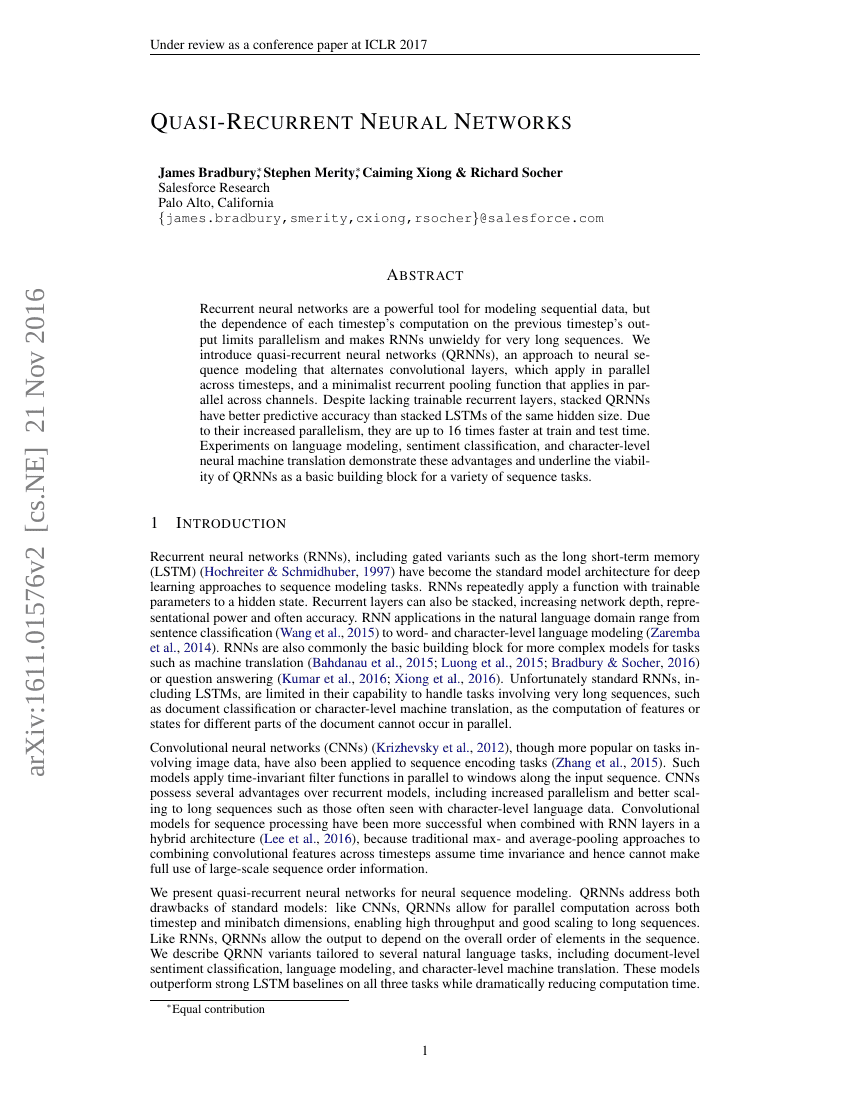Command Palette
Search for a command to run...
James Bradbury; Stephen Merity; Caiming Xiong; Richard Socher

Abstract
Recurrent neural networks are a powerful tool for modeling sequential data, but the dependence of each timestep's computation on the previous timestep's output limits parallelism and makes RNNs unwieldy for very long sequences. We introduce quasi-recurrent neural networks (QRNNs), an approach to neural sequence modeling that alternates convolutional layers, which apply in parallel across timesteps, and a minimalist recurrent pooling function that applies in parallel across channels. Despite lacking trainable recurrent layers, stacked QRNNs have better predictive accuracy than stacked LSTMs of the same hidden size. Due to their increased parallelism, they are up to 16 times faster at train and test time. Experiments on language modeling, sentiment classification, and character-level neural machine translation demonstrate these advantages and underline the viability of QRNNs as a basic building block for a variety of sequence tasks.
Code Repositories
Benchmarks
| Benchmark | Methodology | Metrics |
|---|---|---|
| machine-translation-on-iwslt2015-german | QRNN | BLEU score: 19.41 |
Build AI with AI
From idea to launch — accelerate your AI development with free AI co-coding, out-of-the-box environment and best price of GPUs.